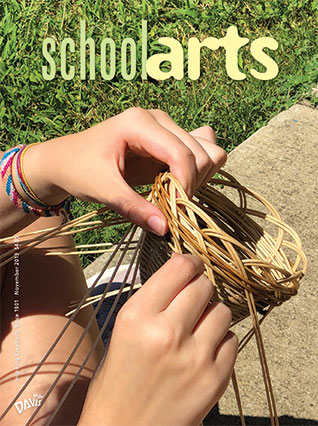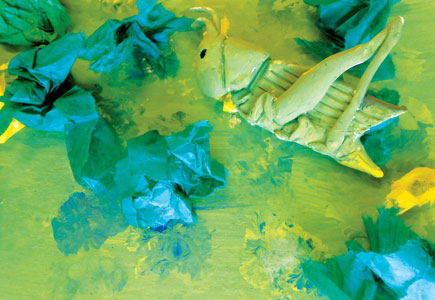 |
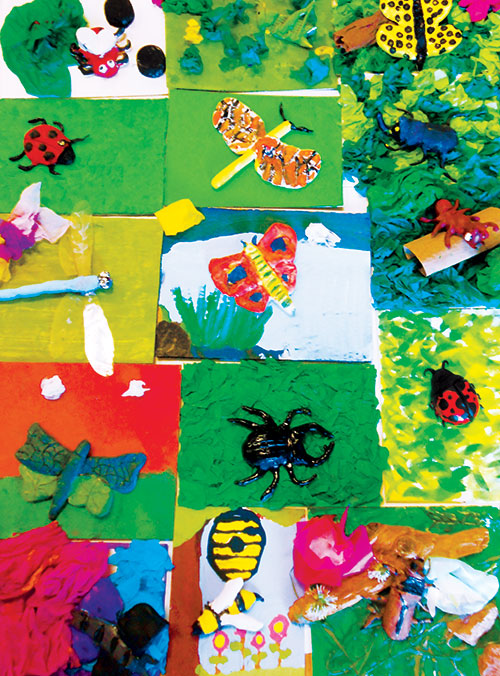 |
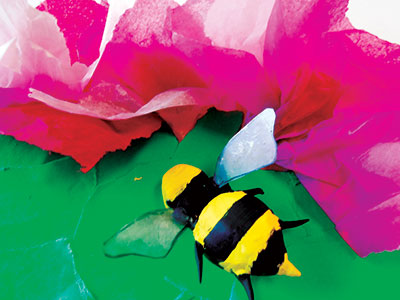 |
| Top to bottom: A mixed-media grasshopper. A collective art display. Tucker Bruyninckx. |
Introducing Medium and Concept
As I began developing my unit on 3D art, I knew I wanted to share a new medium with my fourth and fifth grade students. I decided on polymer clay as the medium for sculpting because it remains pliable and does not dry out when exposed to air. This gave me an opportunity to share with students the basic molecular structure of polymer clay (polyvinyl chloride PVC). Many of them related it to PVC pipes, with which they were familiar. Next, I shared a short video clip of an artist sculpting with polymer clay.
Part One: Research Assignment
Once students had a general understanding of the medium they would be working with, I told them they would each be given the opportunity to research and sculpt any insect of their choice. I then shared two brief videos with the class that highlighted ten interesting insects and explored entomology. This was a nice segue to explaining that an entomologist is a scientist that studies insects and their environments.
I asked students to think of themselves as entomologists when completing their research assignment, which was to include their insect’s common name, scientific name, ten facts, and an illustration of it on a 9 x 12" (23 x 30 cm) sheet of paper. Students had until their next art class (six days) to complete this assignment.
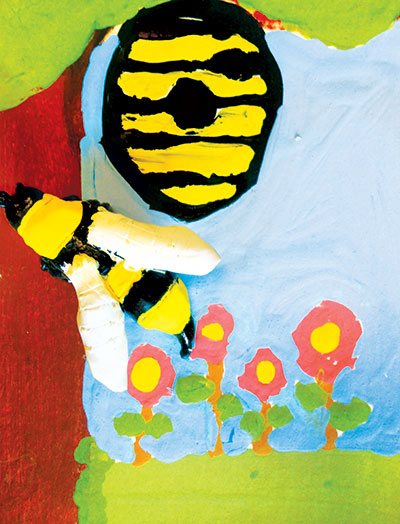 |
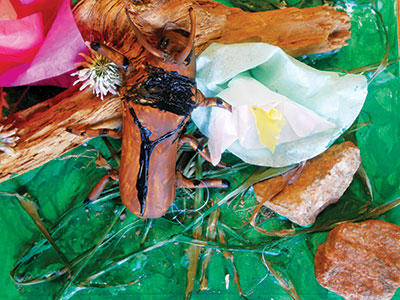 |
| Top to bottom: Olivia Langley. Jane Hensley. |
Part Two: Sculpting
During the next class, I provided each student with a palm-sized amount of polymer clay along with a toothpick to use for adding details. During the sculpting process, I provided students with handouts depicting various insects as well as a plethora of books about insects I had gathered from our school’s media center. When the insects were complete, I baked them in the classroom toaster oven at 225º (107ºC) for fifteen minutes.
I next provided students with a 5 x 7" (13 x 18 cm) mat board to create an environmental background for their insect. They could use various media such as tissue paper, paint, construction paper, cardboard, or even natural elements such as sticks, rocks, and moss. Some students asked if they could combine two mat boards into an L-shape to have more background to work with. Who am I to hinder the creative process?
Reflection and School Display
Students made connections between science and art standards, but more importantly, they made a personal connection to the significance of insects to the environment. Students’ artworks were exhibited in the school’s media center along with their research.
Audrey Crosby is an art teacher at North Columbia Elementary School in Appling, Georgia. audreyartisan40@hotmail.com
NATIONAL STANDARD
Connecting: Relating artistic ideas and work with personal meaning and external context.
WEB LINKS
Why Insects Matter: www.nationalgeographic.com/animals/2019/02/why-insect-populations-are-plummeting-and-why-it-matters/
Smithsonian BugInfo: www.si.edu/ spotlight/buginfo/bugnos
View this article in the digital edition.
